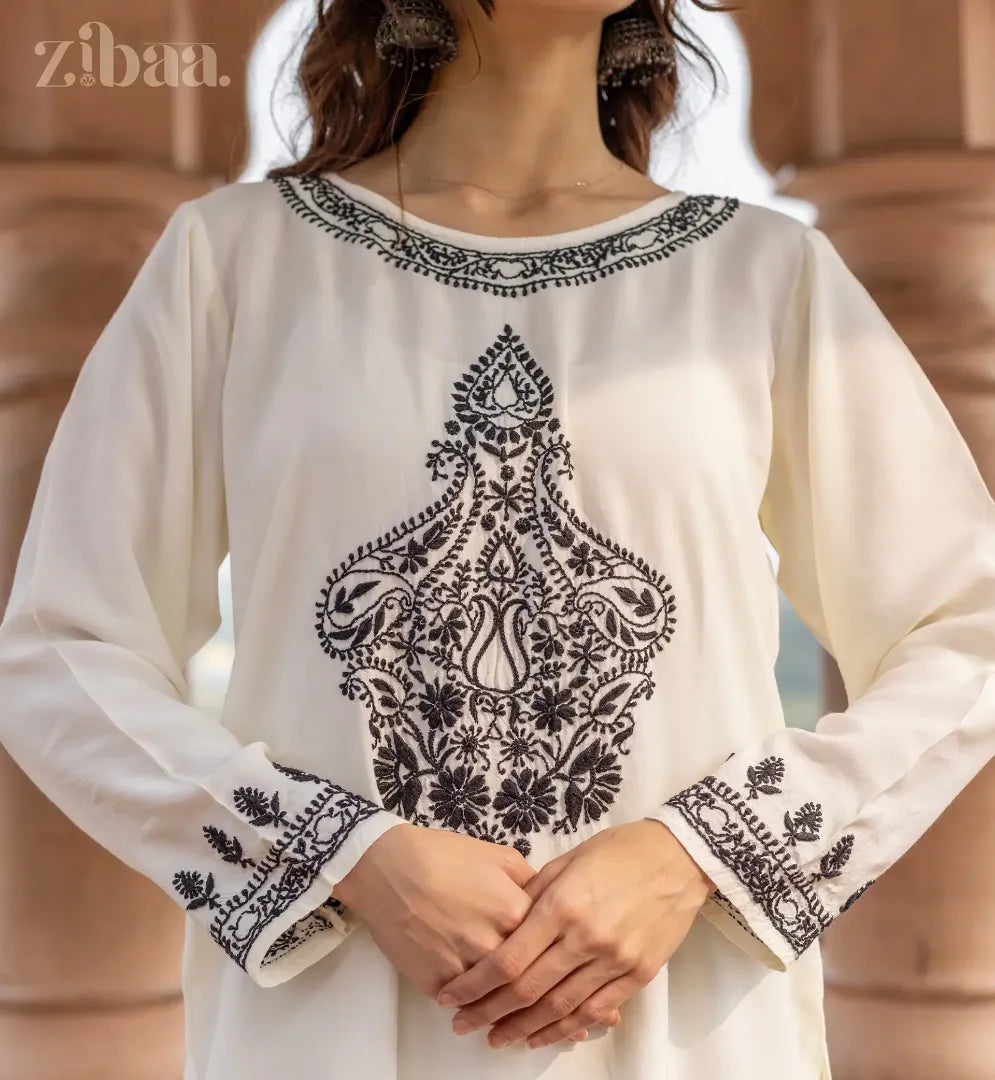A black Chikankari kurti is a wardrobe staple for anyone who values elegance, tradition, and versatility. However, the comfort and overall look of your kurti depend significantly on the fabric it is made from. Choosing the right material ensures that the embroidery looks its best while keeping you comfortable throughout the day.
In this guide, we explore the most popular fabrics for black Chikankari kurtis, how they affect comfort and drape, and tips to select the perfect material for your needs.
Why Fabric Choice Matters
The fabric of your kurti plays a crucial role in:
• Highlighting the embroidery and stitch details
• Determining comfort and breathability
• Affecting drape, flow, and silhouette
• Influencing durability and care requirements
Not all fabrics are equal, and certain materials complement the delicate Chikankari embroidery better than others.
Cotton – Lightweight and Breathable
Cotton is the most common choice for black Chikankari kurtis, and for good reason.
Why cotton works well
• Soft and breathable, ideal for everyday wear
• Lightweight, making it perfect for hot climates
• Holds embroidery well without causing puckering
• Easy to maintain with gentle washing
Cotton kurtis pair well with palazzos, leggings, or straight pants and can be styled for both office and casual wear.
Georgette – Elegant and Flowing
Georgette adds a semi-sheer, flowing quality to black Chikankari kurtis, making it a favorite for festive and evening occasions.
Advantages of georgette
• Drapes beautifully over the body, enhancing the silhouette
• Adds a soft movement to the embroidery, making it visually dynamic
• Lightweight and comfortable while still looking formal
• Available in a variety of weaves, allowing for different embroidery densities
Pair a georgette kurti with flared palazzos or a layered skirt for a sophisticated look at weddings or parties.
Chiffon – Soft and Airy
Chiffon is known for its delicate, airy texture that creates a graceful appearance.
Benefits of chiffon kurtis
• Feels light against the skin and offers great breathability
• Ideal for layered or double-layered embroidery work
• Adds a subtle elegance to evening and casual wear
• Can be combined with contrasting inner lining for a polished look
Chiffon kurtis are perfect for semi-formal events, evening dinners, or festive celebrations.
Silk – Luxurious and Rich
Silk brings a natural sheen and luxurious feel to black Chikankari kurtis.
Why silk is special
• Enhances the contrast of white or tone-on-tone embroidery on black
• Smooth texture that allows intricate stitching to shine
• Ideal for special occasions, ceremonies, and formal events
• Slightly heavier, giving the kurti a structured drape
Silk kurtis are best paired with silk or satin bottoms and metallic accessories to complete an opulent look.
Mulmul – Soft and Traditional
Mulmul, also known as muslin, is lightweight, breathable, and traditionally used in Chikankari.
Advantages of mulmul kurtis
• Extremely soft, providing all-day comfort
• Enhances the delicate, hand-embroidered patterns
• Natural texture that complements traditional Indian styling
• Perfect for casual outings and relaxed occasions
Pair mulmul kurtis with simple cotton bottoms or palazzos for a minimalist, timeless style.
Choosing the Right Fabric for Comfort and Style
When selecting a black Chikankari kurti, consider these factors:
• Occasion: Cotton and mulmul are great for casual and daily wear, while silk and georgette suit festive or formal events.
• Climate: Lightweight fabrics like cotton and mulmul are perfect for hot weather, while silk or layered georgette works for cooler evenings.
• Embroidery Density: Heavily embroidered kurtis require sturdier fabrics like silk or georgette to hold the design properly.
• Maintenance: Cotton and mulmul are easier to wash, while silk and chiffon need dry cleaning or careful hand washing.
Fabric Care Tips for Longevity
No matter which fabric you choose, proper care ensures your black Chikankari kurti remains beautiful for years:
• Wash in cold water or hand wash with mild detergent
• Avoid scrubbing or twisting the embroidery
• Dry in shade to prevent color fading
• Store folded with tissue paper between embroidery sections
• Iron on low heat or inside out to protect threads


